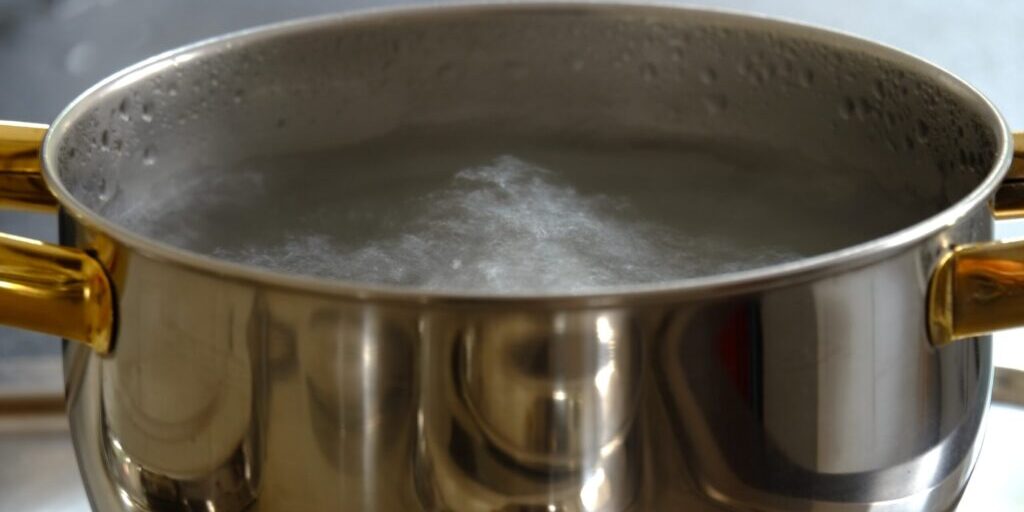The City of Emmonak recently spent more than a month on a boil-water notice, ending 2018 on their third boil-water notice for the calendar year. That just may be the price of having more water, fewer pipe freeze-ups, and more sustainable infrastructure as the City continues major upgrades into 2019.
Yukon-Kuskokwim Health Corporation (YKHC) Director of Environmental Health and Engineering, Brian Lefferts, says the boil-water notice at the beginning of 2019 resulted from a routine test that showed the presence of bacteria total coliform.
“They did additional follow-up testing that was positive, and until those tests came back negative, they continued the boil-water notice.”
When total coliform is found it can be a sign that e.coli is present, as well. To ensure safety, additional testing must be conducted. At first, contamination near the most recent construction site on the Eastern piping configuration caused City Manager Martin Moore to believe that the upgrades were the cause.
However, as more testing was done, the issue was found to be bigger. Here’s Lefferts:
“But they had contamination on both loops, a little bit unusual. I’m not exactly sure how the contamination got in there, but that’s exactly why we do the testing.”
After a month-long notice and continued testing, Alaska Department of Environmental Conservation declared Emmonak’s water safe on January 10, and at no time was e.coli ever detected, nor were there reported water-borne illnesses. Lefferts did mention that the length of the notice was increased as delayed flights and weather made it difficult to get sample tests to the lab in time for testing.
But while the water has been declared safe, YKHC has not been able to figure out the source of contamination. One effective way to treat the situation is to increase chlorination, something the city of Emmonak did.
The most recent boil-water notice stretched from December 5 to January 10 and was the result of a routine test, but the previous notices in 2018 were precautionary measures due to construction done on water infrastructure. According to Lefferts, that is standard safety procedure.
But that means more notices could be on the way. This year, Emmonak is looking to use a $2 million state grant for a new water intake facility. Jeff Stanley of CRW Engineering in Anchorage is the project manager for the Emmonak water upgrades:
“What the new river intake is going to do is to allow them to pump water year round 24/7, 365 days a year.”
The problem right now is that Emmonak currently has an existing river intake system that floats on the river in the summer and runs a pump through the ice in the winter. However, as climate changes, this system has proved more difficult and unstable for residents. Water shortages have resulted from the inability to set up the pump on the ice to get water.
“So, what we’re currently working on is the design of a directionally drilled intake which will start on shore and come up about halfway across the river and be a submerged intake that shouldn’t be impacted by the ice.”
This can leave residents with a reserve of 7-10 days’ worth of water, resulting in shut downs in one half of the city or the washeteria being closed for a few hours.
State funding is fully approved for the water intake phase, and CW Engineering is hoping for construction to begin this summer and be complete in the autumn.
Residents are already experiencing the benefits from these upgrades. In October 2018, the final update of Emmonak’s original piping configuration was completed. Originally, the city had a two-pipe system; now, residents have a single pipe system that depends on a circulation pump. According to the project manager, this system is easier to maintain and more easily expands to accommodate a growing community like Emmonak.
As long as residents keep the circulation pump on, Stanley says freeze-ups should greatly diminish:
“This year, we’ve had very few freeze-ups on the west side of the system, because people have had the system for over a year now.”
These upgrades were paid for by United States Department of Agriculture’s rural development program and the state of Alaska, but those funds were only for the main existing distribution and collection funds. At this point in time, all of those original homes have had the opportunity for upgrades, with more starting to join. Funding through Village Safe Water and Indian Health Services has allowed some newer homes to connect to the updated main distribution, as well.
The third and final update phase upgrade will focus on the water treatment facility, but funding has not yet been secured for that project.
At this time, project manager for Emmonak, Jeff Stanley, estimates the city has currently undergone $16 million in water infrastructure improvements since 2012, when severe flooding necessitated the first round of upgrades.
Without knowing how the total coliform entered the water system, it is not known if these upgrades will have any effect on bacteria in the future.
Image at top: photo via Pixabay, public domain.




